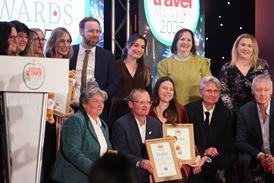- Subscribe

Receive the magazine in print or keep it digital
Schools and academies can claim a free print subscription to School Travel Organiser magazine. Or keep it digital and register to access our web content for free and receive the magazine’s digital edition to your inbox, as well as the fortnightly email newsletter.
Find out more
- News & Ideas
- Features
- School Travel Awards
- LOtC Yearbook
- Useful Links
- About Us
- Online E-magazine
- Media Pack
- Contact Us
5 of the best: science experiences for schools

There’s nothing like interactive learning to bring the subject of science to life. Here are some school-friendly museums and attractions that give students a real taste of the excitement that has fascinated scientists through the ages.
Please sign-in or register for free to continue reading
You are not logged in and your access limit has been reached.

If you’re not already registered, sign up and you can read up to 10 stories or features per month for free
Complete our simple registration form so you can get more of this:
- The latest news and ideas to help you find and organise brilliant school trips.
- Independent advice and expert views regarding learning outside the classroom.
- Tips, suggestions and case studies from teachers and real school experiences.
- Look for ideas based on the subjects and key stages relevant to your school groups.
- Subscribe to our newsletter and e-mail alerts.
- Get access to your own Account Centre where you can save articles and control your profile.
- Enter competitions.
Get more from our website – register today
Alternatively, you can tell us a bit more about your interests and get access to the School Travel Organiser website, with no monthly limit.



